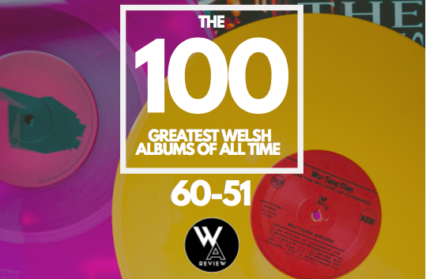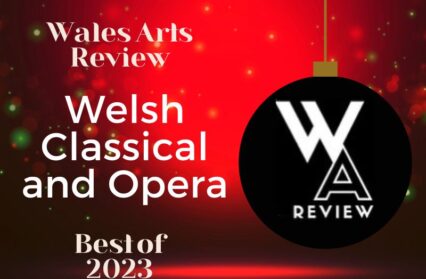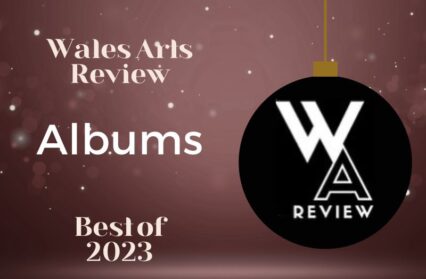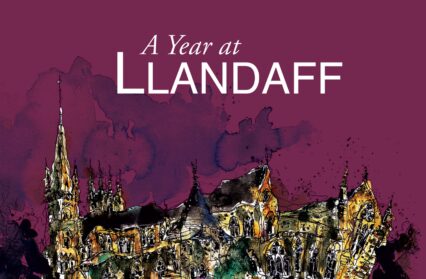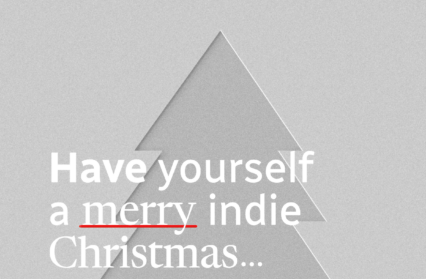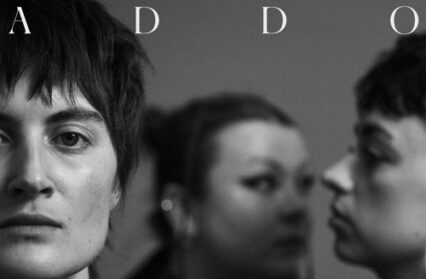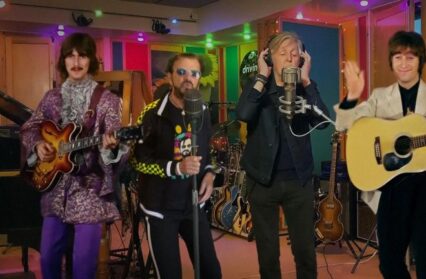Join Wales Arts Review every Friday as we count down the one hundred greatest Welsh albums of all time, as chosen by the Wales Arts Review team and friends of the Review. Week four sees us count down from 60-51 of the greatest Welsh albums, taking in electronica, Celtic folk, synthpop and classic rock.
60
Underworld
Second Toughest in the Infants
(1996, Smith Hyde)
Forget for a moment, if you can, the cosmic enormity of Underworld’s “Born Slippy”, a song flung into mainstream via its inclusion on the Trainspotting soundtrack, but also a song that was, to all intents and purposes, the first dance track to enter the popular consciousness outside the relative niche fanbase of rave culture. Forget if you can a song almost obnoxious in its responsibility as gatekeeper to the riches of 90s dance culture. Why forget? Because beyond the megalith there is the vast important ground-breaking universe of Cardiff’s Underworld. Not just one song, but a huge back catalogue of music that defined a genre that defined an era. Second Toughest in the Infants was the fourth studio album from the duo of Karl Hyde and Rick Smith (and second of the period that included Darren Emerson). It was a step up in almost everything that that had gone before – a step up in epic ideas, in musical philosophy, and a step up in their second phase incarnation as a techno house combo. If their previous album, Dubnobasswithmyheadman (1994) had announced them to the world as the techno butterflies emerged from the synth pop of their two albums before that, then Second Toughest in the Infants signalled an act that was here to stay. For all of its electro beat intensity, Second Toughest is a wonderfully sensual record, and is more than just a record to sink into and lose yourself in, but it’s also – definitely – that too.
59
Cate Le Bon
Crab Day
(2016, Amplify Music)
Cate Le Bon’s fourth album (and her second record produced stateside) is a shimmery, off-kilter exercise in lyrical abstraction and sonic lushness. Le Bon began work on the album by first irking out its sonic soundscape, even establishing wordless vocal harmonies, all before sitting down to pen the lyrics to go with it. Like a pencil drawing sketched onto a wet, paint-heavy canvas, the effect is one of beautiful abstraction – its lyrical diversions less important than the poetry of its sound, the baroque feel of its teetering, flourishing arrangements. With slips of marimba, parps of sax and Le Bon’s trademark post-punk guitar riffs, the record manages to conjure lightness – oxymoronically – through its density. Nestled at the heart of its baroque meanders and Dadaist sensibilities is a love of play, one clearly in evidence in the single for which the album is named – ‘Crab Day’ – the song recounting an imaginary holiday, its outlook irreverent, its lyrics intoned with Le Bon’s characteristic staccato style. In totality, the album offers a unique and beautifully rendered tracklist, one which grows lovelier and more detailed with each passing listen.
58
Cotton Wolf
Life in Analogue
(2017, Bubblewrap)
Lion Robertson and Seb Goldfinch are a couple of Welsh composers of ambient and electro who share an uncanny ear for the golden turn in a musical sequence. As Cotton Wolf, they are consistent in their propulsive energies that created albums such as Ofni (2019) and this beautiful, sharp, subdued masterpiece that is Life in Analogue. It is an album redolent of its influences, and tracks like “Avalon” and “Future Never” (with a heart-wrenching guest vocal by Lois Rogers) are sumptuous and warm landscapes, melodic and quietly dark. Elsewhere, Eno and Neu! cast imposing shadows on the compositions, with the title track and “Vessels” approaching Vangelis levels of cinematic resonance. Cotton Wolf are though, at heart, trip hoppers, and tracks like “Ultra Five” will have them found most at home. Tracks like “Cage of Lights” live very much on the dance floors of the big European nights, and speak of big horizons and the amber glow of the hazy sun up. Life in Analogue is a record that speaks to you of open spaces, of hope, of beautiful things not fading away. There are few albums out there – at least for the devotees of electronic music – who will not find a more all-embracing album of joy, even when wrapped in its darkest most contemplative moments.
57
Scritti Politti
Anomie Bonhomie
(1999, Rough Trade)
Scritti Politti’s fourth studio album seemed to come out of nowhere in 1999, and did so much more than just remind the music-listening public what a singular talent main man Green Gartside is. The songwriting on Anomie & Bonhomie was as good as on any of the previous albums, only now it had been augmented further by a slew of guest performances, a bulging roster of musical talent beyond the usual parade of excellent session players and infiltrators who usually make up the rest of the band around Gartside’s eye of the storm. Some of those looking forward to more of the layered lucid textures of the Scritti sound were thrown of whack by the incorporation of hip hop and grunge. Some felt these elements had been crowbarred into the record, obscuring the essential beauty of Gartside’s writing and production, but Anomie & Bonhomie stands up remarkably well over twenty years after its release. Rather than sitting awkwardly, contributions from Mos Def and Me’Shell Ndegéocello accentuate the luscious depths of Gartside’s art. It’s a sophisticated melding of forms, perhaps a little overambitious in places, and the first time you hear the grunge guitars of Allen Cato it takes a bit of getting used to, but Gartside’s vision never wavers, and, of course, the Scritti name has always derived much strength from the quality of names you know are working under its banner at any given time, and with players like Wendy Melvoin and Dave Gamson this album was never to go to fall short.
56
Boy Azooga
1,2 Kung Fu!
(2018, Heavenly Recordings)
You could be forgiven for thinking that guitar indie was dormant (if not over). The last throes of this kind of stuff pushed out some of its most vibrant exponents – bands like Vampire Weekend and MGMT – and it’s in these band’s footsteps the azooga boys of Boy Azooga walk. 1,2, Kung Fu! May be a piss poor title for an album that otherwise will stick in the memory, but it is a title that speaks of something of the energy and ideas of the band behind it. As a title track, it’s a decade too late for the final flings of the indy club heyday, but had it been out then it would have consistently filled floors. There’s just no getting away from the strut of these stray cats. The boys have clearly soaked up a long list of generous influences, and the album is full of delicious little surprises where the ghost of artists like William Onyeabor and Herbie Hancock pop their heads in where they are very much welcome. This is indy with a heavy funk backbone. But also you can hear a bit of George Harrison, Traffic, Talking Heads, and Radiohead. For all of this eclecticism, the album is a coherent whole. It was lauded on its release, and winning the Welsh Music Prize launched the band on to a well-deserved set on Later with Jools… and many more plaudits besides. 1,2, Kung Fu! is an album of well-crafted and well-curated songs brought to life by an intelligent band of post-punk rabblerousers. There are worse ways to spend a half hour.
55
9Bach
Tincian
(2014, Real World Productions)
There’s something equal parts nostalgic and delicious about the reimagining of tradition. Folk band 9Bach have boldly established themselves as the best thing to happen to Celtic music in a long time, and their second album, Tincian, is true to such form. Coming five years after their debut, this record was the band’s first LP signed to an established label and combines a psychedelic dub throb pulsating behind the typical folk-centric guitar and harp melodies. With Welsh-language lyrics, in thematic breadth the album covers everything from childbirth to love to isolation to work and much more in between, the stories encased in mesmerising vocal harmonies dominant throughout (with a special mention to the duet from Lisa Jȇn and Lou Bennett). Headed by a wife-husband duo (Lisa Jȇn and guitarist Martin Hoyland), the album was written following a trip taken by Jȇn to Australia which included meetings with the aboriginal people there – roots which clearly come through in Tincian’s completion. The addition of a male-voice choir and two members of the Black Arm Band Company (an Australian aboriginal group) add to the soft ethereal layers of otherworldliness that lend this record its status as an album of quiet and undeniable power.
54
Datblygu
Pyst
(1990, Ankstmusic)
Datblygu songs often operate as vignettes or short stories. In Pyst, Edwards’ lyrics take us with him through the Welsh everyday of the early 1990s- from the cattle markets of local discos (‘Ms Bara Lawr’), to driving in a long tailback to recycle whiskey bottles while listening to experimental jazz on Radio 3 (‘Nofel o’r Hofel’). Edwards, like the Welsh modernist writer Caradoc Evans, is at his best when focussed on the grotesque, but he is never patronising to his subject in these songs. Datblygu always retain great feeling for the underdog, the exploited, tired, lonely and preyed upon. Pyst offers a more produced sound than the first LP Wyau. One gets a sense of more sonic play with the intervention of strings and poppy disco beats. In ‘Am’ for example there is a deliberate discord stuck between music and word which makes the listener simultaneously smile and writhe. In this song Edwards ‘takes the pyst’ out of Welsh language rock operas, male voice choirs, bands on tour, folk festivals and pub poetry competitions. Pyst’s forensic attention to Welsh language culture, its production and circulation in stereotype can make us wince. But there is more than irony and satire here, Pyst offers an excess of feeling is felt in moments of melodious intensity.
53
The Pride
Magic & Molecules
(2019, DK Records)
The title of this 2019 from the south Wales hip hop collective is perhaps the wrong entry point. Magic & Molecules may sound like a hippy album, and to a certain extent it revels in reflective, contemplative lyricism just this side of navel gazing, but in reality it is a soaring passionate focussed expression of a group concerned with questions bigger than what you might find on your average urban record. Sub-kon opens with the superb “The Rare Side of Me” and sets the tone for a luscious landscape of colours and influences. “Moongazing” is a proper earworm, and here the magnificent Rufus Mufasa steps out of the mists of a loose groove with an arresting bilingual melodic rap. For the most part, Molecules & Magic is life-affirming – it really is a record about figuring out our place in the universe, and rushes scope from the wider cosmos to the minutiae of the trundle of every day life. Twammers adds some lightness (there’s something of the GLC’s Mystikal about him), and Enbe lends some lyrical gravity, but the album would be missing some depth and height without Mufasa’s presence. She floats around the edges of some of the tracks, making for an ethereal outlier, and when she gets fully into the mix she adds texture and soul. Molecules & Magic is a rare hip hop album that transfers disillusionment and anger into something more transcendent. This album has the stuff it takes to get under the skin, and perhaps change your way of thinking.
52
Lleuwen
Gwn Glân Beibl Budr
(2018, Sain Cyf)
Gwn Glân Beibl Budr by singer Lleuwen is her definitive statement to date. She’s released a series of unique albums since the turn of the century (Duw a Wyr/ God Only knows, with jazz pianist Huw Warren in 2005), Penmon (2007) and Tân (2011), but Gwn Glân Beibl Budr (Clean Gun, Dirty Bible) tops the lot. It’s both aggressive and elegiac, manic and tranquil, historical but very much in the present. The songs range from raw, brutal guitar playing (the opener “Myn Mair”) to classic originals in the folk-ballad tradition (“Bendigeidfran” and “Caerdydd”) to a larger band sound (“Hen Rebel, Pam”) – Lleuwen beefs up the sound on these tracks when she’s joined by talented brothers Aled and Dafydd Hughes, and the exquisite string team of Francesca Simmonds on violin and Llio Rhydderch on triple harp. There are still hints of Lleuwen’s formative jazz roots, (comparison with Cassandra Wilson’s classic Blue Light Till Dawn would not be untoward) but the whole sound transcends a specific genre and is an uniquely Welsh mix of roots, folk, religion and raw emotion. A classic statement from the second decade of this century.
51
Huw Warren
Hundreds of Things a Boy Can Make
(1997, Babel Label)
There is no doubt that Huw Warren is one of the most important and accomplished musicians to come out of Wales in the twentieth century. Thoroughly schooled in modern compositional techniques and ‘difficult’ time signatures yet completely instinctive and of the moment in his improvisation Huw has been involved in numerous important and influential projects and recordings. From his time with folk singer June Tabor which led to the formation of Quercus, to Perfect Houseplants and his album with Welsh singer Lleuwen Steffan, Huw has ploughed his own unique and distinctive furrow. Along with Paula Gardiner, he has been instrumental in putting ‘Welsh jazz’ on the map. As is often the case with ‘best of’ lists, jazz is often forgotten, and any inclusion becomes somewhat tokenistic (like the ‘jazz’ inclusion in the Mercury Prize). So here it is… Hundreds of Things a Boy Can Make is a glorious life-affirming statement from Huw that includes superb contributions from his international core quartet of jazz heavy-weights Mark Feldman on violin, Peter Herbert on bass and Martin France on drums, and others like Mark Lockheart and Dudley Phillips when he augments the core quartet format for a larger ensemble sound. Released in 2004 this album encapsulates Huw’s musical virtuosity, playfulness and quirkiness. From the rollicking “Where the debris…” and “Sheep” to the sheer beauty of “Ravishing Indifference”, this album is of the very highest order.
To find out our picks for 100-91, 90-81, 80-71, and 70-61 in the Wales Arts Review 100 Greatest Welsh Albums of All Time just follow the links.
*
Join us next week for 50-41 in the Wales Arts Review 100 Greatest Welsh Albums of All Time.
*
List compiled by Wales Arts Review and friends of the Review. Words by Cath Holland, Tilly Foulkes, Caragh Medlicott, Gray Taylor, Nerys Williams, Craig Austin, Jude Rogers, Jack Boyce, Gareth Smith, Tomos Williams, and Gary Raymond.


